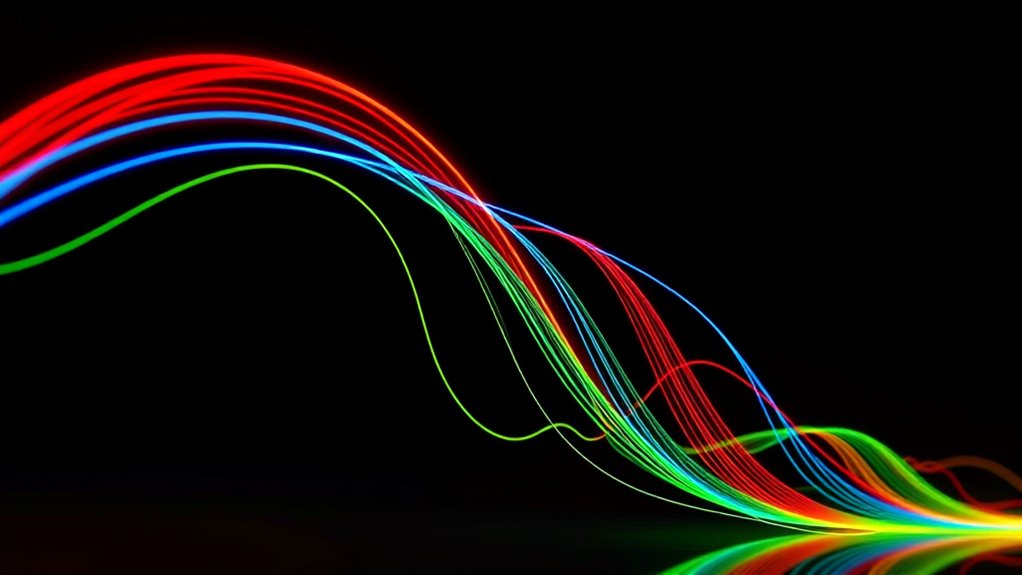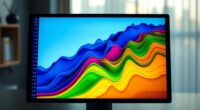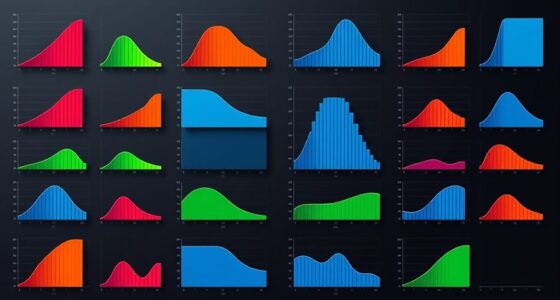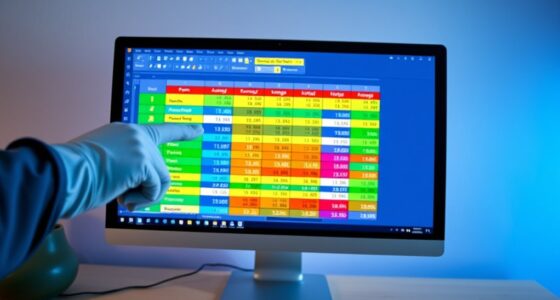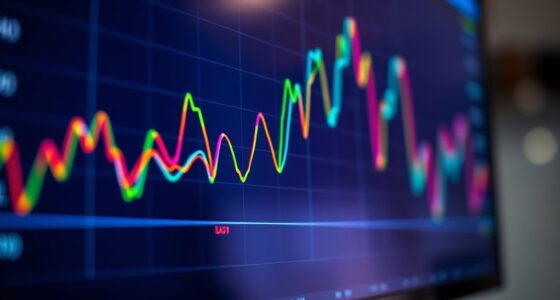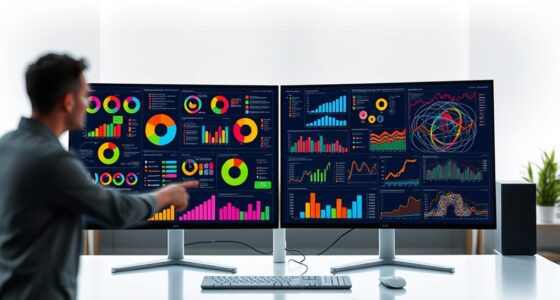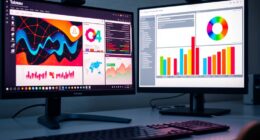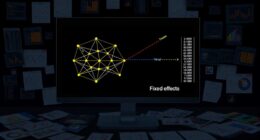Sankey diagrams are visual tools that help you understand complex flows of resources, energy, or data by using arrows whose widths show the magnitude of each flow. They clearly display sources, pathways, and destinations, making it easier to identify inefficiencies, losses, or bottlenecks. By highlighting how resources move through systems, Sankey diagrams simplify complex information into an intuitive visual story. Keep exploring to learn how these diagrams can transform your data analysis.
Key Takeaways
- Sankey diagrams visually represent complex flows of resources, energy, or data with arrows scaled to flow magnitude.
- They help identify major sources, destinations, and inefficiencies within systems at a glance.
- Designed with accurate node mapping and proportional arrows, they simplify understanding intricate processes.
- Widely used in energy management, data transfer analysis, and supply chain visualization to support decision-making.
- Customizable and easy to interpret, Sankey diagrams turn complex information into accessible visual stories.
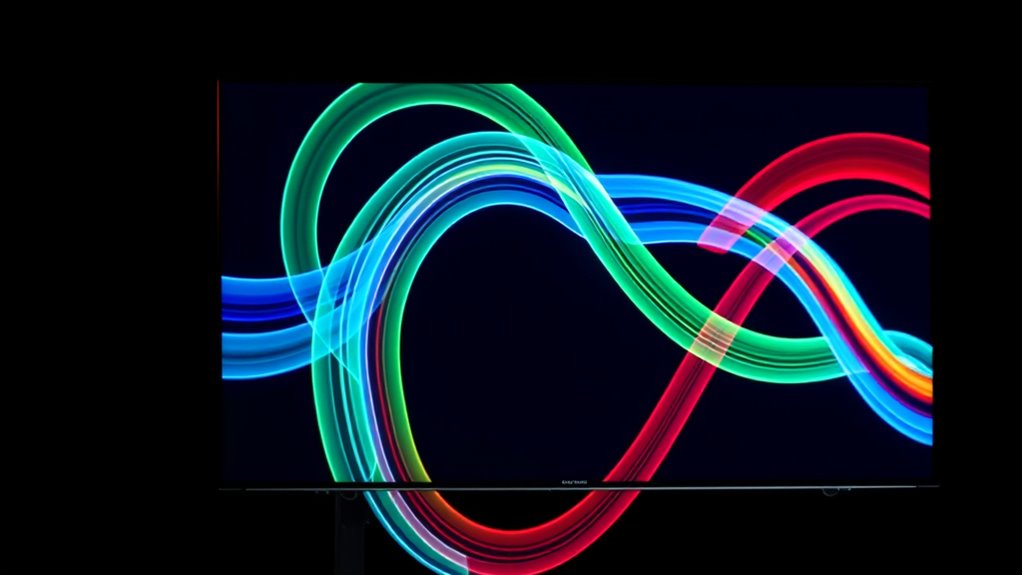
Have you ever wondered how to visualize the flow of resources, energy, or data in a clear and impactful way? If so, Sankey diagrams might be just what you need. These specialized visual tools excel at illustrating complex processes by representing flows with arrows whose widths are proportional to the quantity they carry. When you focus on energy flow or data visualization, Sankey diagrams make understanding these systems straightforward, highlighting where resources are coming from, how they move, and where they end up. Whether you’re analyzing electrical consumption, tracking data distribution, or illustrating material flows, these diagrams simplify complexity into an intuitive visual story.
Sankey diagrams visually represent complex flows with proportional arrows for clearer understanding.
What makes Sankey diagrams stand out is their ability to display multiple interconnected flows simultaneously. Instead of a cluttered chart, you get a clean, organized picture of the entire process. As you look at the diagram, you can instantly see which sources contribute the most, how efficiently energy or data is transferred, and where losses or bottlenecks occur. This clarity is especially helpful in fields like energy management, where understanding energy flow can inform decisions to improve efficiency or reduce waste. In data visualization, Sankey diagrams can reveal patterns or disparities in data transfer that might otherwise be hidden in raw numbers or spreadsheets.
Creating a Sankey diagram involves mapping out the different stages or nodes of a process and then drawing arrows between them. The key is to accurately scale these arrows so their widths reflect the actual magnitude of flow. For energy flow, this might mean showing how much electricity is generated, transmitted, and consumed. For data visualization, it could display how data moves across servers or platforms. Because the diagram emphasizes proportions, even small differences become immediately apparent, making it a powerful tool for identifying areas that need attention or improvement. Additionally, the use of visualization techniques enhances the effectiveness of these diagrams by making complex data more comprehensible.
Interpreting a Sankey diagram requires a keen eye for the flow widths and their connections. You can quickly identify major sources, destinations, and points of loss or inefficiency. This visual clarity helps in decision-making, whether you’re optimizing a supply chain, reducing energy consumption, or streamlining data processes. Plus, with the increasing availability of tools that generate Sankey diagrams, you can easily customize them to suit your specific needs.
In essence, Sankey diagrams are an invaluable part of data visualization when you need to represent energy flow or resource distribution clearly and compellingly. They turn complex data into an accessible visual narrative, helping you see the bigger picture at a glance and make smarter, more informed choices.
Frequently Asked Questions
How Do Sankey Diagrams Handle Complex Multi-Source Data?
When you deal with complex multi-source data, Sankey diagrams handle data complexity by visually representing how different sources contribute to various flows within a system. They integrate multiple data sources seamlessly, showing the magnitude of each source’s input. You can easily track how each source interacts, making it clear where data overlaps or diverges. This visual approach simplifies understanding complex source integration, making it easier to analyze and communicate your data insights effectively.
What Software Tools Are Best for Creating Sankey Diagrams?
Imagine you’re designing a Sankey diagram to visualize energy flow in a factory. You’d want software options like Microsoft Power BI or Google Charts, which offer user-friendly interfaces and customizable features. When choosing tools, consider design considerations such as data complexity and visual clarity. These options help you create clear, insightful diagrams efficiently, making your data storytelling more impactful and easier to interpret for stakeholders.
Can Sankey Diagrams Be Interactive or Dynamic?
Yes, Sankey diagrams can be interactive and dynamic. You can add interactive features like tooltips, clickable links, and filters, which let you explore data more deeply. Dynamic updates allow the diagram to change in real-time as data inputs vary, making your analysis more responsive. With the right software, you can create engaging, adaptable Sankey diagrams that enhance understanding and presentation, especially for complex data flows.
How Do You Customize Color Schemes in Sankey Diagrams?
You can customize color schemes in Sankey diagrams by exploring various color palettes and using available customization options. Typically, you’ll find settings to change the colors of flows, nodes, and labels, allowing you to match your diagram to your branding or preferred style. To do this, adjust the color properties within your chosen tool or software, ensuring that the color schemes enhance clarity and visual appeal.
Are Sankey Diagrams Suitable for Real-Time Data Visualization?
You can use Sankey diagrams for real-time data visualization, especially when tracking energy efficiency or conducting historical analysis. They effectively display flows and help identify inefficiencies quickly. While they work well for dynamic data, make certain your tool supports real-time updates to keep the visualization accurate. If you need to monitor ongoing processes or compare past and present data, Sankey diagrams are a suitable choice for clear, visual insights.
Conclusion
Now that you’ve seen how Sankey diagrams map energy flows like a river’s gentle current, you’re equipped to understand complex data with clarity. These diagrams act as visual bridges, guiding you effortlessly through information’s twists and turns. With this knowledge, you can spot inefficiencies or patterns at a glance, turning abstract numbers into a vivid story. Embrace Sankey diagrams—they’re your compass in the vast ocean of data, making everything flow smoothly.

